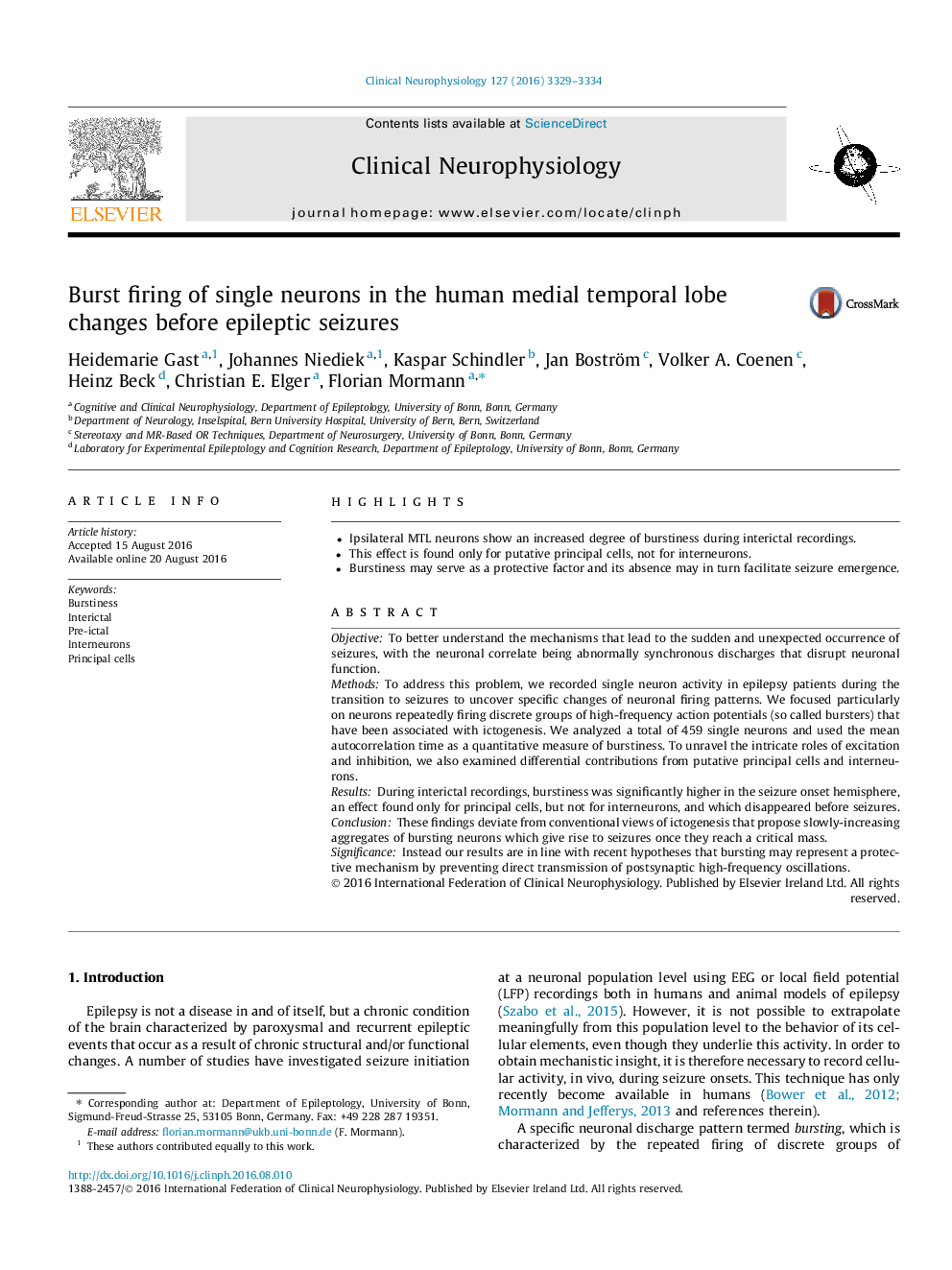| Article ID | Journal | Published Year | Pages | File Type |
|---|---|---|---|---|
| 5627866 | Clinical Neurophysiology | 2016 | 6 Pages |
â¢Ipsilateral MTL neurons show an increased degree of burstiness during interictal recordings.â¢This effect is found only for putative principal cells, not for interneurons.â¢Burstiness may serve as a protective factor and its absence may in turn facilitate seizure emergence.
ObjectiveTo better understand the mechanisms that lead to the sudden and unexpected occurrence of seizures, with the neuronal correlate being abnormally synchronous discharges that disrupt neuronal function.MethodsTo address this problem, we recorded single neuron activity in epilepsy patients during the transition to seizures to uncover specific changes of neuronal firing patterns. We focused particularly on neurons repeatedly firing discrete groups of high-frequency action potentials (so called bursters) that have been associated with ictogenesis. We analyzed a total of 459 single neurons and used the mean autocorrelation time as a quantitative measure of burstiness. To unravel the intricate roles of excitation and inhibition, we also examined differential contributions from putative principal cells and interneurons.ResultsDuring interictal recordings, burstiness was significantly higher in the seizure onset hemisphere, an effect found only for principal cells, but not for interneurons, and which disappeared before seizures.ConclusionThese findings deviate from conventional views of ictogenesis that propose slowly-increasing aggregates of bursting neurons which give rise to seizures once they reach a critical mass.SignificanceInstead our results are in line with recent hypotheses that bursting may represent a protective mechanism by preventing direct transmission of postsynaptic high-frequency oscillations.
